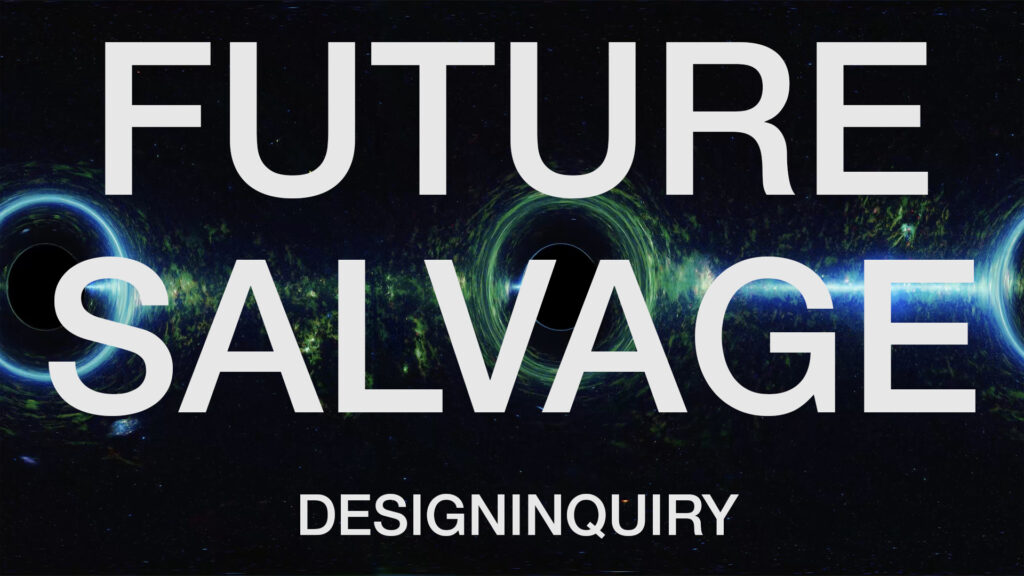
DesignInquiry and a dynamic roster of participants and activators for a week long investigation through making, contemplating, printing, binding, and collaboration!
In this context, technology plays a crucial role—as a medium of analysis, reconstruction, and innovation. It enables the creation of new methods for processing materials, digital mapping of abandoned resources, and also supports participatory processes that allow communities to co-decide what is worth reclaiming. Digital technologies, environmental sensors, AI tools, and open-source platforms can assist not only in the practical recovery of materials and spaces but also in redefining value—showing that what seems “unnecessary” today can gain new life through knowledge, collaboration, and imagination.
Future Salvage, denotes a discovery of hidden value in something dredged up from the deep, something thought to be beyond repair. As a design act, it’s a transformation, a kind of alchemy, wherein new life is breathed into abandoned things. How, then, might salvage provide an ethos and an imaginary for our futures? Can we envision the salvage of cities, of democracy, of our relations with the natural world? The port city of Amsterdam provides a perfect venue for the topic of salvage, with its history as a term used in shipping insurance, and the city’s possible futures below sea level. Aside from transforming shipping palettes into furniture or abandoned buildings into communal residences, salvage also becomes a political theory, a “craft of the poor” and a way of making that activates a protesting public. Practitioners of salvage “open themselves to the new and unseen,” according to political theorist Jason Kosnoski, who sees salvage as one of the “arts of living on a damaged planet,” in the words of Anna Lowenhaupt Tsing.
more info: futuresalvage.designinquiry.net